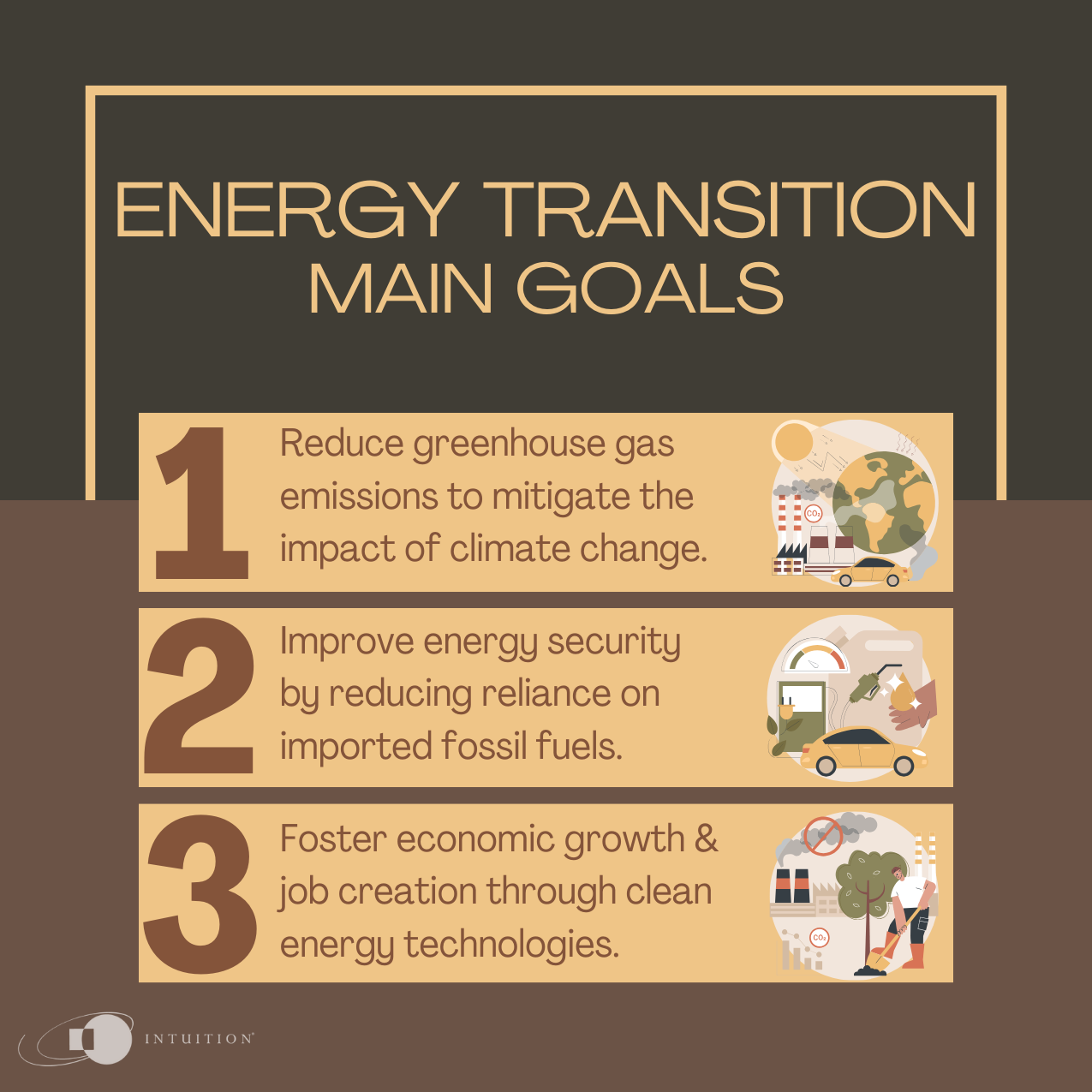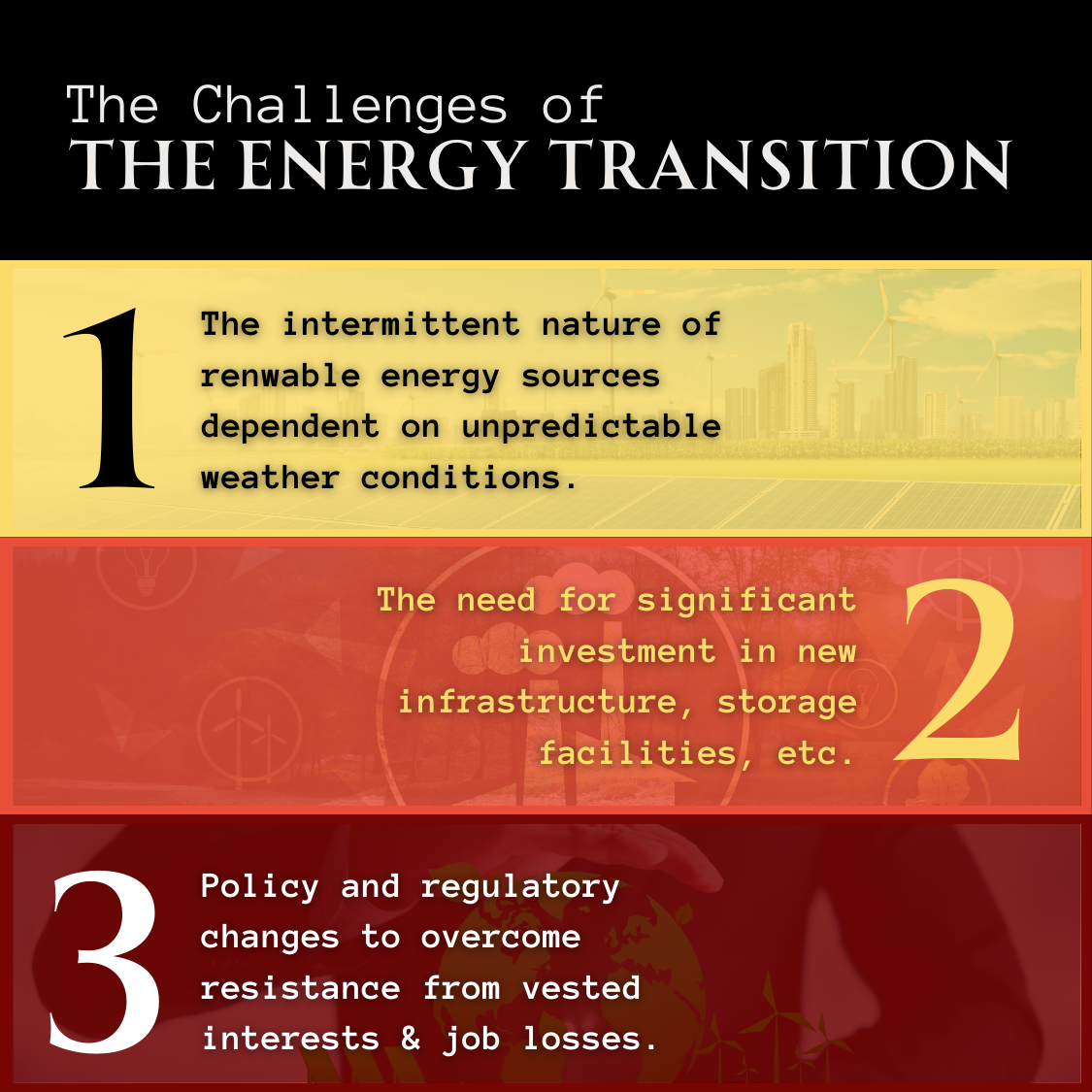Understanding the energy transition

Energy transition is a term that has become increasingly popular in recent years, but what does ‘energy transition’ actually mean? And why is it so important?
This article provides a clear understanding of the energy transition, its history and evolution, the key elements involved, and the challenges it presents. Furthermore, it looks at successful case studies of energy transition initiatives and examines the future of the energy transition. Finally, it will offer insights into how businesses can participate in the energy transition and embrace this inevitable change.
Introduction to energy transition
The concept of energy transition refers to a significant change in the way energy is produced and consumed. It involves a shift from traditional, non-renewable energy sources such as coal, oil, and natural gas to renewable and sustainable sources such as wind, solar, and hydropower.
The energy transition is not a new concept by any means. Throughout history, societies have undergone several energy transitions. For instance, the shift from wood to coal during the Industrial Revolution was an energy transition. So too was the move from coal to oil and gas in the 20th century.
Today, the world is undergoing another energy transition, driven by concerns about climate change, energy security, and the desire for cleaner, more sustainable energy sources. This transition is complex, involving technological, economic, social, and political changes.
What is the significance?
Today’s energy transition is a global effort to reduce the world’s dependence on fossil fuels and move toward more sustainable and renewable sources of energy. It is a multilayered process that involves the adoption of new technologies, changes in policies and regulations, and shifts in societal behaviours and attitudes.
The energy transition aims to achieve several goals:
- Firstly, it seeks to reduce greenhouse gas emissions to mitigate the impacts of climate change.
- Secondly, it aims to improve energy security by reducing reliance on imported fossil fuels.
- Thirdly, it strives to foster economic growth and job creation through the development and deployment of new, clean energy technologies.
While the energy transition is a global phenomenon, the pace and nature of this transition vary from country to country, depending on factors such as resource availability, economic conditions, and policy priorities.

History and evolution
The history of energy transition dates back to the beginning of human civilization. The first energy transition occurred when humans moved from relying on their own physical strength to using the energy of animals for work and transportation.
Another significant energy transition took place during the Industrial Revolution when societies moved from wood and other biomass fuels to coal. This transition was driven by the invention of the steam engine and the rapid growth of industry and urbanization.
In the 20th century, the world underwent another major energy transition with the widespread adoption of oil and natural gas. This transition was catalyzed by the invention of the internal combustion engine and the growth of the automobile industry.
Today, the world is in the midst of yet another energy transition, moving away from fossil fuels and toward renewable and sustainable sources of energy.
Three reasons why we need the energy transition
The energy transition is crucial for several reasons.
Firstly, it is critical for mitigating climate change. The burning of fossil fuels for energy is the largest single source of global greenhouse gas emissions. Transitioning to renewable energy sources can significantly reduce these emissions.
Secondly, the energy transition is important for energy security. Dependence on fossil fuels, especially imported ones, exposes countries to price volatility and supply disruptions. By diversifying the energy mix and increasing the share of domestically-produced renewable energy, countries can enhance their energy security.
Thirdly, the energy transition can drive economic growth and job creation. The renewable energy sector is one of the fastest-growing industries globally, offering a wide range of job opportunities in areas such as manufacturing, installation, and maintenance.
Key elements
The energy transition involves several key elements.
Firstly, it requires the deployment of renewable energy technologies such as wind turbines, solar panels, and hydropower plants. These technologies harness the power of the wind, sun, and water to generate electricity.
Secondly, the energy transition involves improving energy efficiency. This means using less energy to perform the same task or get the same amount of services. Energy efficiency can be achieved through a variety of measures, such as insulating buildings, improving the efficiency of appliances and industrial processes, and promoting energy-saving behaviors among consumers.
Thirdly, the energy transition entails the electrification of various sectors of the economy, such as transportation and heating. This involves replacing fossil fuel-based technologies with their electric counterparts, which can be powered by renewable energy.
The challenges of energy transition
One of the main challenges of the energy transition is the intermittent nature of renewable energy sources. Unlike fossil fuels, which can be burned whenever needed, renewable energy sources such as wind and solar depend on weather conditions, which can be unpredictable.
Another challenge is the need for significant investment in new infrastructure. This includes not only renewable energy plants but also transmission lines, storage facilities, and electric vehicle charging stations.
Furthermore, the energy transition requires policy and regulatory changes to create a favourable environment for renewable energy and energy efficiency. This involves overcoming resistance from vested interests and managing the social impacts of the transition, such as job losses in the fossil fuel industry.

Successful initiatives
Despite these challenges, there are numerous examples of successful energy transition initiatives around the world.
In Denmark, for instance, the government has set a target to become 100% renewable by 2050, and already more than half of the country’s electricity comes from wind power.
In Germany, the Energiewende (or “energy turnaround”) policy has successfully increased the share of renewable energy in the electricity mix from 6% in 2000 to over 40% in 2020.
In China, the government has embarked on an ambitious program to expand solar and wind power, making the country the world’s largest producer and consumer of renewable energy.
The future of the energy transition
The future of energy transition is promising but also uncertain.
On the one hand, the costs of renewable energy technologies continue to fall, making them increasingly competitive with fossil fuels. On the other hand, the pace of the transition will depend on a variety of factors, including political will, policy support, technological advancements, and societal acceptance.
In any case, the energy transition is unlikely to be a smooth, linear process. Instead, it will likely involve periods of rapid change followed by periods of slower progress. But one thing is clear: the transition to a more sustainable and renewable energy system is inevitable and is already underway.
How businesses can participate
Businesses have a crucial role to play in the energy transition. They can do this by investing in renewable energy projects, improving their energy efficiency, and incorporating sustainability into their business strategies.
Companies can also participate in the energy transition by developing and commercializing new technologies and solutions that contribute to the transition. This can range from electric vehicles and energy storage systems to smart grids and energy management software.
Furthermore, businesses can influence the energy transition through their purchasing decisions. By choosing to buy renewable energy and energy-efficient products, they can create demand for these products and encourage their further development and deployment.
Regardless of how businesses choose to participate, an in-depth understanding of the energy transition is crucial when making such impactful decisions.
Conclusion
In conclusion, the energy transition is a complex and multifaceted process that involves a shift from fossil fuels to renewable and sustainable energy sources. It is driven by a variety of factors, including concerns about climate change, the desire for energy security, and the potential for economic growth and job creation.
While the energy transition presents numerous challenges, it also offers many opportunities. By embracing the energy transition, businesses can not only contribute to a more sustainable and secure energy system but also gain a competitive advantage in the fast-growing green economy.
Understanding the energy transition is the first step toward participating in it. Acquiring relevant knowledge facilitates the making of informed decisions that align with the trends shaping the future of energy.


